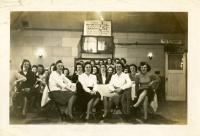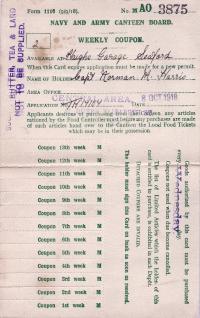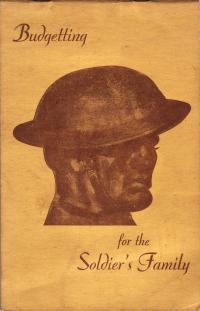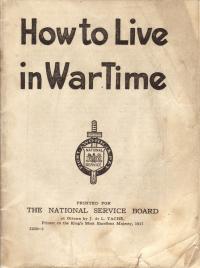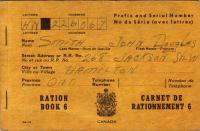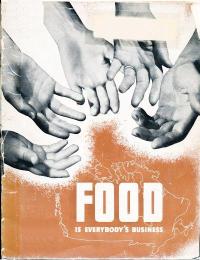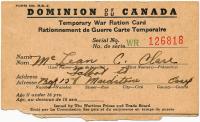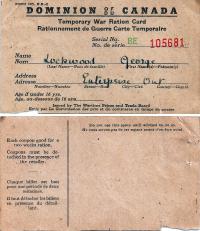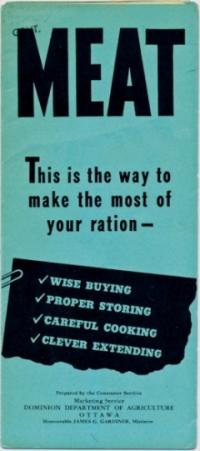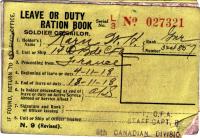Rationing
Fancy a sandwich?
A common message to the Canadian civilian population during the Second World War was that their responsible food consumption was as important to the war effort as any other wartime activity. While soldiers fought overseas, Canadians at home could do their part in securing victory by adhering to coupon rationing, and abiding by the restrictions imposed by the Wartime Prices and Trade Board.
Rationing in wartime Britain
Toronto physician Norman Harris joined the Canadian Army Medical Corps in 1916, and in 1918 was with a Canadian hospital in Seaford, in southern England. This card permitted him to purchase rationed food from a local shop.
Living on a soldier's pay
Through menu suggestions, nutrition tips, and budget advice, this booklet aimed to help a soldier's wife make the best use of her husband's assigned pay and dependents' allowance.
"Thrift - Economy - Production"
Much of this booklet dealt with stretching wartime rations, but it also addressed thrift and economy in a more general sense, with tips on how to curb waste in the home.
Coupons for food
During the Second World War, Canadians became accustomed to rationing, which forced them to submit coupons in order to purchase commodities that the government had designated as scarce.
Food is Everybody's Business
This handbook describes Canada's Food Conservation Program and details the factors contributing to the increasing demand for domestic food production.
Temporary Ration Card
Temporary ration cards were issued to members of the armed forces on leave or visitors to Canada, such as tourists. The coupons had the same value as those in standard ration books but had no expiry date.
Temporary ration card
During the Second World War, Canadians became accustomed to carrying coupons for most commodities, such as this temporary ration card.
Make the most of your meat ration
This pamphlet emphasizes preparation and preservation methods to extend one's meat ration.
Rations for a soldier on leave
Soldiers on leave were issued with ration books so that they did not have to consume the rations of their civilian hosts.

